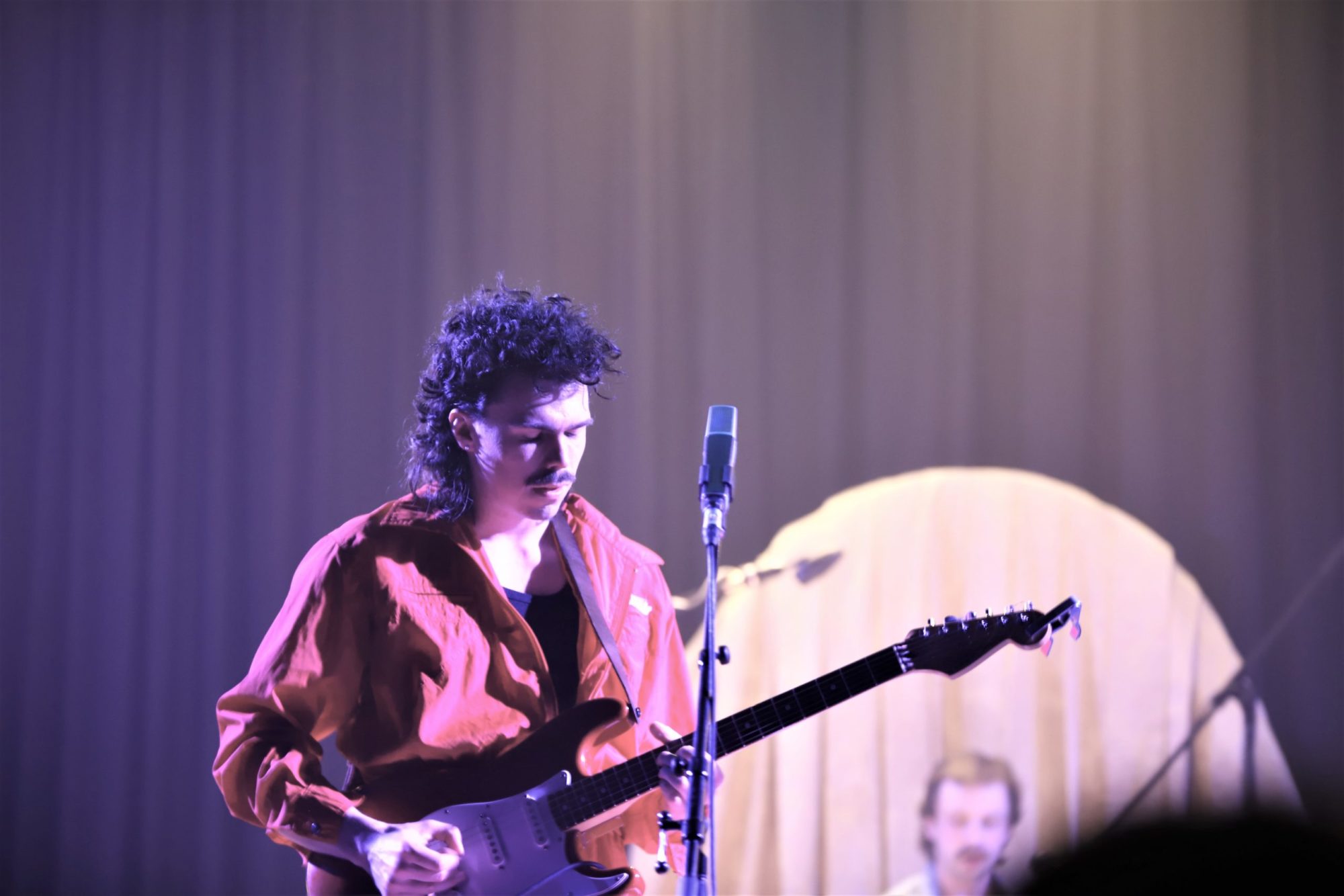By Jenny Henkelman

“I’m cooking on the tour,” Matt Magura announces between bites of his “Little Tadpole” breakfast at the Toad in the Hole on a Saturday afternoon. “I’ve got a Magic Bullet and a butane stove. I’m going to make fucking curry wraps. Smoothies every morning!” Bassist Louis Levèsque Coté is agreeable to the notion; he and Ian La Rue start discussing the possibility of getting an inverter so that the Magic Bullet and possibly a rice cooker could be operated while the van is in motion.
This kind of creativity is surely inevitable when you have seasoned musicians looking forward to a tour. These guys have been around. When Ian La Rue and the Condor (drummer Magura, Coté, and guitarist Andrew Workman) list their other current and previous bands, the lists are long and overlapping. La Rue and Coté have both done stints in Boats and the Paperbacks, for instance. Workman has played in everything from the Horribly Awfuls to Cone Five.
But this is the first time this particular combination has come about, and that, Coté says, is all because of La Rue. “The Condor wouldn’t be a band outside of Ian,” he says. For La Rue, though, having the Condor behind him is a dream come true. “I’ve been looking forward to making a full band record for my whole life. This is it—kinda like the pinnacle of my career,” he says of the new record, titled A History in Layers. “It was a big move on a couple levels, because I always recorded my own stuff, played all my own stuff. So this is the first time I’ve let someone else record it.”
That someone else was Mike Petkau—a longtime staple of the indie rock scene. Petkau is known for playing in bands like Les Jupes, being a sought-after recording engineer and producer and for creating the celebrated and successful Record of the Week Club last year, where he invited, on a weekly basis, three disparate musicians to write and record a track in a single night. Lately, he’s ascended to the position of Artistic Director at the West End Cultural Centre, a move that the guys are all excited about. (The general consensus of his biased-but-honest friends was that he’s going to do an awesome job.)
The West End is the venue for the CD release on February 12, but decision to have the show there was not a simple one, given La Rue’s anarchistic and DIY proclivities. “We struggled really hard with how to do this release,” he says. “We thought about the Park [Theatre], we thought about doing it Create-Your-Own-Venue, Artspace, whatever. But in the end, most of us have connections to the West End.” Workman reassures us that they’re not moving too far from their roots. “We played a show at the Rocker the other week. It doesn’t matter if there’s a state-of-the-art sound system or a crappy P.A. We just want to play in an authentic space.” And when you work hard on a record, you want it to be played to its best advantage in a true listening room. “I take music seriously,” La Rue says. “Sometimes too seriously. Writing can be painful for me. It’s a difficult process.”
The pain of birthing new songs is another reason that La Rue is happy to have the Condor with him on this new record. But the Condor is not just Ian La Rue’s support group (though he does say, “I’d be hopeless without you guys!”). What do they bring to his music? “Power,” La Rue says without hesitation. “And bigness. I’m serious. I guess when I’m writing I always have a band in my head.” The band enables him to realize the sound he imagines, though Coté notes, “It’s not always easy.”
“No, it isn’t,” La Rue agrees. “It’s a lot of trial and error and blank stares.”
“Ian’s put a lot of trust in us,” Magura says, “as the band that’s making the things you got in your head come about. It’s pretty organic.” The guys say that though the band plays the songs La Rue writes, it’s a collaborative process developing them for the record and the live show. “I think the Condor is definitely not just a backing band,” La Rue says.
The band name wasn’t just picked for its cool phonetics or the currency of the wildlife motif. “We were originally going to be called Ian La Rue and the Sparrowhawks,” La Rue explains. “But they’re less powerful. The condor to me was really… strong. And I like the idea that the condor, as a bird, almost went extinct, down to 12 animals, and they brought it back up to a more healthy number. And they have ten-foot wingspans! But listen to this: they have really small chest muscles. They can’t really flap very well. So it can often take them awhile to get off the ground. And once they get up there, they just soar on the thermals.”
“We don’t flap very much. We have small chest muscle,” Coté summarizes. Magura gets a thoughtful look on his face and asks, “Isn’t the condor the one with the disgusting skin head?”
La Rue nods. “Small ugly heads. And as for the singular vs. plural—well, having many condors, that’s crazy! One is all you need, I think.”
“If you saw one condor in your life, that would be enough,” Workman says.
“Exactly,” La Rue agrees.
Ian La Rue and the Condor release A History of Layers at the West End Cultural Centre on Friday, February 12, with guests Nova and Cannon Bros.

